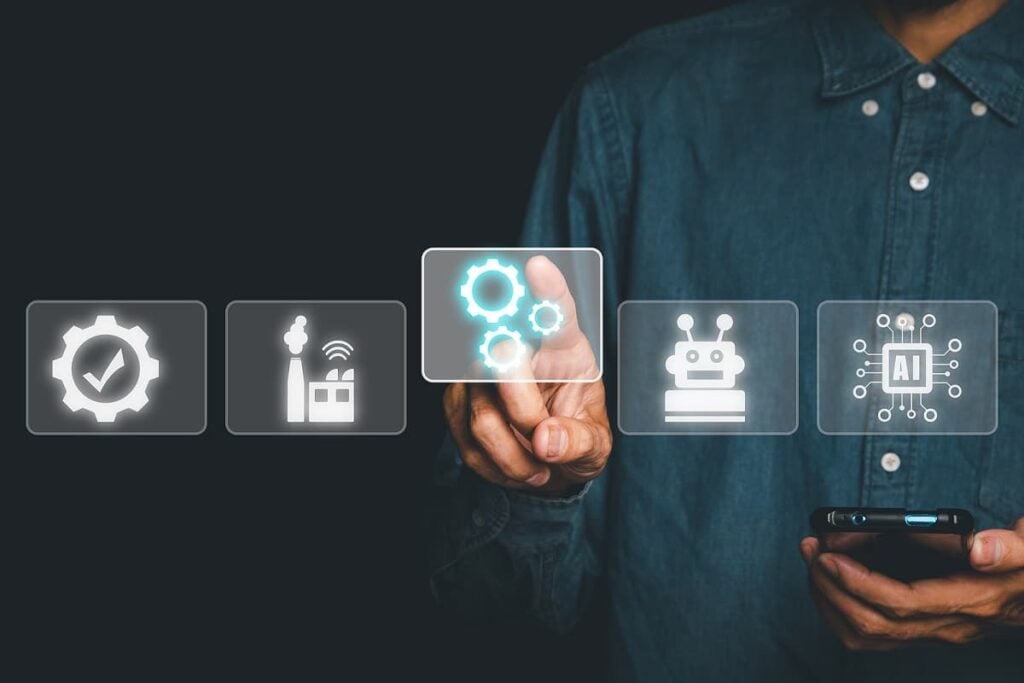A Smartphone Barcode Scanner From Scandit
Table of contents

Every time your items are rung up at the grocery store, a technology is used that was first patented 48 years ago. Several decades after the first barcode patent was issued, it began its use in stores and hasn’t evolved much since. Your bog-standard one-dimensional barcode (1D barcode) consists of vertical lines that contain 20-25 alphanumeric characters. Doesn’t seem like much, but that represents more unique identifiers than you’ll ever need.
Up until now, barcodes have primarily been captured using highly-effective dedicated scanning devices that require an investment in hardware and maintenance. Hardly makes sense when you consider that each of us carries around a supercomputer in our pockets all day we use to post dumb things on social media with. What if we could enable every smartphone with the ability to read a barcode?
Scandit’s Smartphone Barcode Scanners
Founded in 2009, Swiss startup Scandit has taken in just over $123 million in funding from investors that include Salesforce and Google. The company was founded by a group of researchers from MIT, ETH Zurich, and IBM Research. The team developed “a unique machine learning platform combining leading-edge barcode scanning, optical character recognition (OCR), object recognition, and augmented reality (AR) for use on any camera-equipped smart device, from smartphones to drones, wearables and robots.” Let’s talk a bit more about barcodes for a minute.
Many Types of Barcodes
Barcodes come in many shapes and sizes. For example, some of you may already be familiar with QR codes (also called a 2-dimensional barcode or 2D barcode) like the one seen below:

We generated that QR code in a matter of seconds using Scandit’s barcode generator. Try it out for yourself and you’ll quickly see how useful it can be to encode any sort of message into a barcode and quickly read it with your smartphone. While smartphones may be able to read QR codes out of the box, Scandit enables 20,000 different types of mobile phones to read all types of barcodes using their SDK (software development kit) which supports any android or ios device.
Creating an app that lets you scan barcodes with a smartphone isn’t that difficult. Where things become problematic is when you encounter challenging conditions. For example:

All of these problems have been resolved with Scandit’s barcode scanner app which uses machine learning – in particular, computer vision – to identify bar codes under challenging conditions. Remember how NtechLab was able to still perform facial recognition on people wearing face masks? It’s the same sort of idea here. The best way to see how well your technology works is by applying it to real-world use cases which involve human users.
Shopping in Denmark
Denmark, the home of hygge. Pronounced “hue-guh,” it means living in the present, creating a sense of intimacy, and savoring the moment, something most of us in ‘Murica could never dream of doing without meditation – or hard drugs. It’s also the perfect place to deploy a barcode reading app right into the hands of retail consumers.
Coop Denmark is the largest grocery retailer in Denmark, operating 1,150 stores and 36,000 staff across its retail chains and subsidiary stores. The company wanted to launch a mobile app featuring self-scanning so customers could browse stores, scan products with their smartphones, add items to their basket, then pay directly in the app using a card or accrued loyalty bonuses.
In 2019, the Scandit-powered self-checkout app was successfully launched across 1,150 stores in Denmark and Greenland. With over 1.6 million downloads, up to 250,000 people use the app daily for an average of four minutes. Customers simply enter the store, open the app on any camera-enabled mobile device, shop by scanning barcodes, and complete purchases on the spot with a digital receipt.

Coop also deployed the Scandit-powered app to 2,000 employees on Samsung smartphones. The lower cost, compared to dedicated scanners, means more employees have devices, rather than having to share. Other benefits include:
- Employees complete tasks like order picking, price markdowns, scanning loyalty cards, and checking inventory much quicker.
- Shelf management and automated price verification is done before the products even get to checkout – no need for manual corrections.
- Order picking of on-line orders is done in seconds.
Employees seem to like Scandit too, as the number of active Scandit-powered devices used by Coop’s staff tripled within the first year. Coop is now testing how they can incorporate additional Scandit technology including Scandit’s MatrixScan and AR to make further workflow efficiencies for inventory management and asset tracking. (MatrixScan locates, tracks and decodes multiple barcodes, adding visual feedback to indicate which ones have been scanned.)

Barcodes Are Big Business
Scandit’s technology capabilities aren’t just confined to Denmark and grocery stores. With offices across the globe, Scandit’s global client list includes cross-industry representation from big names like 7-Eleven, Alaska Airlines, Carrefour, Hermes, Johns Hopkins Hospital, Levi Strauss & Co, Sephora, Siemens, and Toyota. The mobile barcode scanner is now being used on over 100 million active mobile devices to perform billions of scans a year with.
The other thing to consider is how Scandit’s technology will disrupt existing manufacturers of barcode reading devices. For example, Zebra Technologies (ZBRA) is a $14 billion provider of “enterprise asset intelligence solutions” which include things like barcode readers. One of their products is the TC25 Rugged Smartphone designed for small businesses.

Says the marketing brochure:
Smartphone cameras aren’t built for barcode scanning — that’s why the TC25 delivers the same scanning technology that drives many of the world’s field service teams.
Credit: Zebra Technologies
Yes, smartphone cameras aren’t built for barcode scanning, but remember how software is eating hardware? In much the same way Bright Machines moved complexity from hardware to software, Scandit has moved barcode scanning capabilities into an app which uses any smartphone camera effectively thanks to the power of computer vision algorithms. Maybe your smartphone isn’t as rugged as Zebra’s TC25, but it’s already something you carry around in your pocket all day, and it doesn’t cost an extra $525 a person plus whatever support costs that incurs. (Bring your own device (BYOD) is popular for a reason.) According to Scandit, their barcode scanning app is typically 3X lower than the cost of having dedicated scanners.
Conclusion
The ability to quickly create a code that can easily be scanned by any of the world’s 3.5 billion smartphone users has seemingly unlimited use cases. We’re particularly interested to see how augmented reality can come into play here to improve the user experience. While companies spend billions trying to build the perfect AR device, why not just use that powerful supercomputer we all carry around with us?
And why stop at barcodes? The ability to point a smartphone at any object and learn something about it – a fish at the fishmongers, a mushroom in the forest, a car you’ve never seen before – would allow us to learn about everything we see instead of constantly having to Google everything. It’s a company like Scandit that will eventually make this happen.
Sign up to our newsletter to get more of our great research delivered straight to your inbox!
Nanalyze Weekly includes useful insights written by our team of underpaid MBAs, research on new disruptive technology stocks flying under the radar, and summaries of our recent research. Always 100% free.















